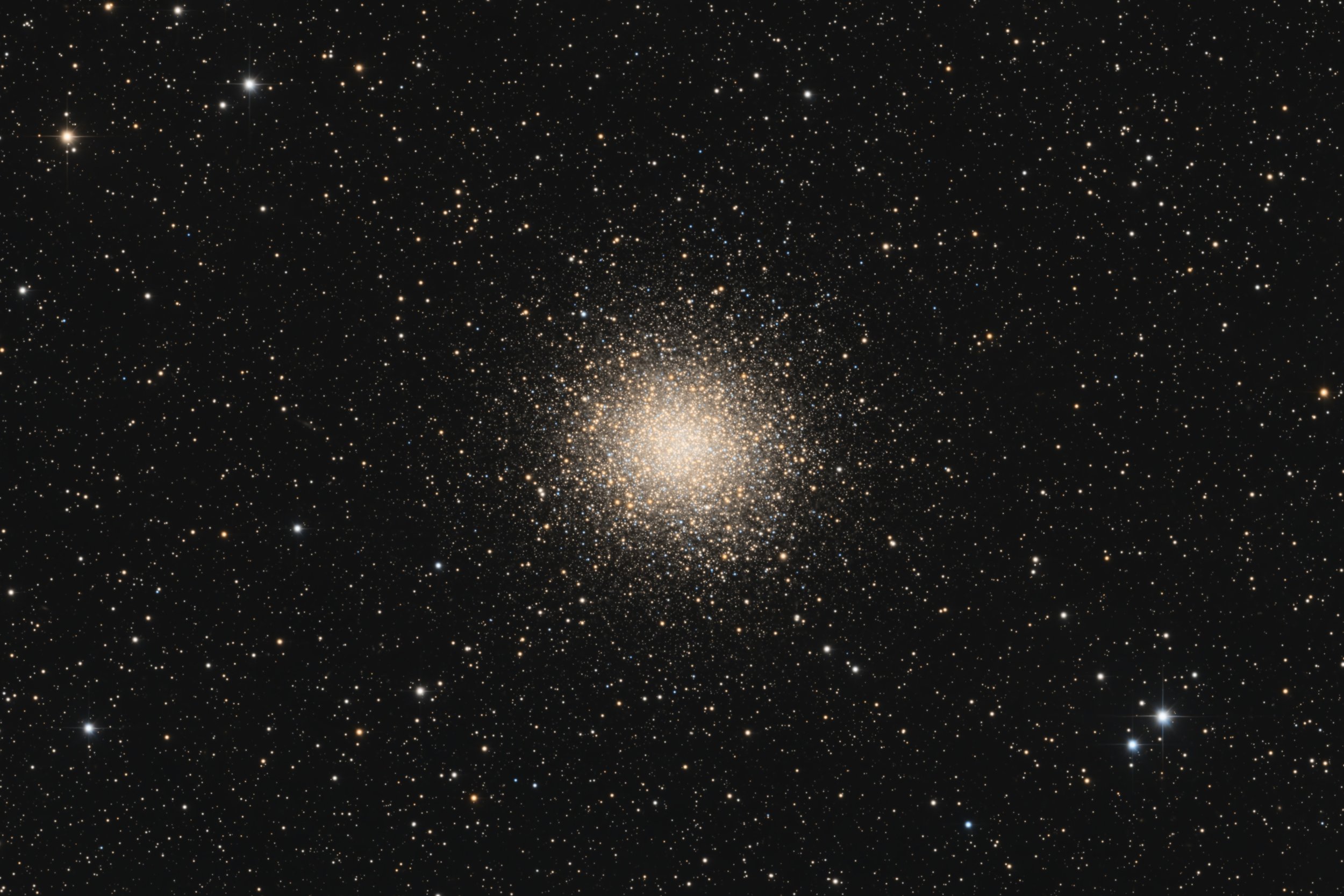M14
NGC 6402
30’ x 20’ | 0.3”/px | 6000 × 4000 px | full resolution
Ophiuchus
RA 17h 37m Dec -3° 14’ | 0°



Messier 14 is a globular cluster situated in the constellation Ophiuchus, discovered by Charles Messier in 1764. Located in the southern part of Ophiuchus, M14 is approximately 30,000 light-years away from Earth. It has an apparent magnitude of about 7.6. The cluster's angular diameter is roughly 11 arc minutes, corresponding to a spatial diameter of about 100 light-years. M14 is composed of hundreds of thousands of stars, which are generally older and have lower metallicity compared to stars in the galaxy's disk. The cluster is known for containing a significant number of variable stars, which fluctuate in brightness and are used by astronomers to measure distances in the universe. A notable historical event is the observation of a nova in M14 in 1938, which was discovered only in 1964 through analysing photographic plates. Novas are relatively rare in globular clusters, making this event significant.
source: Mistral.ai
Data Acquisition
Data was collected over 7 nights during the months of June 2025, using a 14” reflector telescope with full-frame camera at the remote observatory in Spain. Data was gathered using standard LRGB filters. A total of approximately 9 hours of data was combined to create the final image.
Location Remote hosting facility IC Astronomy in Oria, Spain (37°N 2°W)
Sessions
Frames
Equipment
Telescope
Mount
Camera
Filters
Guiding
Accessoires
Software
Planewave CDK14 (2563mm @ f/7.2), Optec Gemini Rotating focuser
10Micron GM2000HPS, custom pier
Moravian C3-61000 Pro (full frame), cooled to -10 ºC
Chroma 2” LRGB unmounted, Moravian filterwheel L, 7-position
Unguided
Compulab Tensor I-22, Dragonfly, Pegasus Ultimate Powerbox v2
Voyager Advanced, Viking, Mountwizzard4, Astroplanner, PixInsight 1.9.3
Processing
All processing was done in Pixsinsight unless stated otherwise. Default features were enhanced using scripts and tools from RC-Astro, SetiAstro, GraXpert, CosmicPhotons and others. Images were calibrated using 50 Darks, 50 Flats, and 50 Flat-Darks, registered and integrated using WeightedBatchPreProcessing (WBPP). The processing workflow diagram below outlines the steps taken to create the final image.
Automated stretching algorithms did not really work very well on this cluster. It made the core of the cluster so bright that it was hard to separate individual stars anymore. One attempt to deal with that was to create an HDR-version using HDRMultiscaleTransform and blend that with the regularly stretched image. While this brought out the individual stars, the overall look became a bit grey-ish and not as punchy as clusters can be. So I reverted back to regular manual stretching using GHS and HT. GHS for the RGB image in ‘Colour’ mode, and regular HT/CT for the luminance. This worked quite well.
The overall tendency of the cluster is that the stars are quite reddish. This is consistent with the fact that most stars in the cluster are rather old. It is also consistent with other images on Astrobin, such as this one, or this one. But other astrophotographers have published images that are a lot more blue, such as this one, or this one. I did choose SO galaxy as the white balance reference in SPCC, which creates generally cooler colours than Average Spiral Galaxy. Also I emphasises the blue stars by selectively increasing the saturation of blue a bit. But overall the cluster has a very warm tone to it, which is probably correct, given the age of the stars. But this once again emphasises how difficult it is to create ‘real’ colours for deep sky objects.
Some of the bright stars had a halo around them that had a slight green and magenta cast, which was removed by using SCNR both on the normal image as well as on the inverted image.
The rest of the processing of the image followed largely a standard processing workflow as is shown below.
Processing workflow (click to enlarge)
This image has been published on Astrobin.
